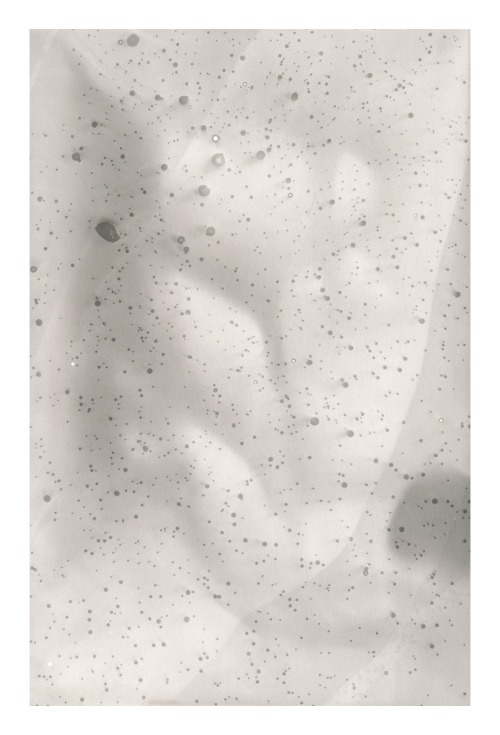The cosmos whispers in the photos of van Julie van der Vaart.
Her photos were on display during the open days held by the Jan van Eyck studios, as a marvellously transparent cloud wafting over the wall. Van der Vaart processed these photos in the dark room so they would dissolve into solid material.
We see bodies that are barely visible, bodies floating in space. The cosmos has already sunk its teeth into them: the substance is impaired and flecked. The bodies disappear into infinity, one further away than another, almost unrecognisable: an arm, a leg, or in between an arm and a leg, groping with my eyes, I hazard a guess.
The series, which is entitled Beyond time, is about an insignificant humanity in the immeasurable expanse of time. We live in a universe of incomprehensible dimensions. This is unfathomable for mankind, we measure in light-minutes and light-years, where a light-minute is the distance light travels in one minute. Light travels at 300,000 kilometre a second, and multiplying that by 60 gives you the distance in one light-minute: 18 million kilometres. The distance to the son is eight light-minutes. But even more intriguing is that when an astronomer looks at Pluto through his telescope, he is looking back five hours in time. This is because the image of Pluto took five hours to reach the earth.
This intense awareness of the immeasurability impresses upon us the relativity of our pin-head existence. The photos of Julie van der Vaart take us back in time, we float away from the earth, into the cosmos, and there we have to let go. It doesn't really matter whether we look forward or backward. The more we know, the more complex the phenomenon of time becomes. But living in an unfathomable world is more than tolerable.

